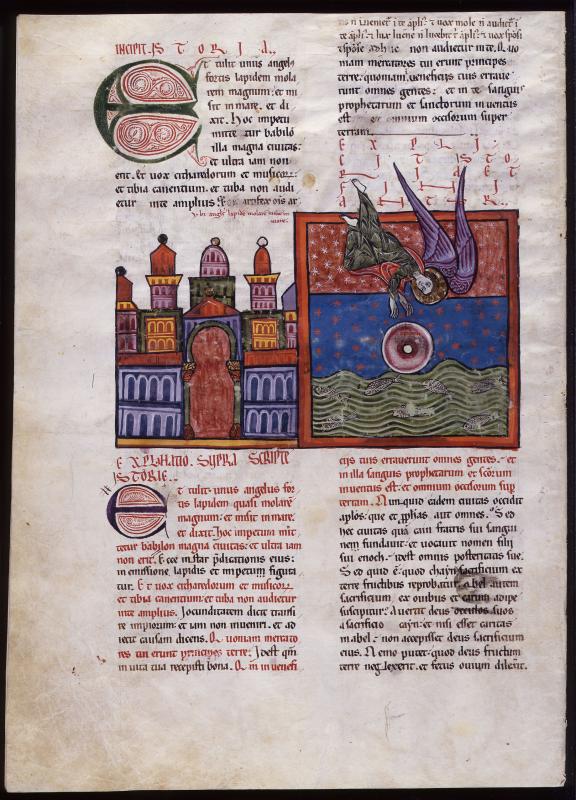
Commentary on the Apocalypse and commentary on the Book of Daniel
Purchased by J. Pierpont Morgan (1837-1913) in 1910
Apocalypse: Angel with Millstone (Revelation 18:21-24) -- City gate of Babylon; nimbed angel casting stone, inscribed, into sea containing fish; starred background; inscription above city gate, UBI ANGELUS LAPIDEM MOLAREM MISIT IN MARE.
A certain strong angel took up a stone, similar to a great millstone, and cast it into the sea, saying: "With this force shall Babylon, that great city, be cast down. And she shall never be found again. And the sound of singers, and musicians, and flute and trumpet players shall not be heard in you again. And every artisan of every art shall not be found in you again. And the sound of the mill shall not be heard in you again." (Rev. 18:21–22)
Babylon is shown on the left, while the millstone, a metaphor for the city, is hurled into a fish-filled sea by an angel.
